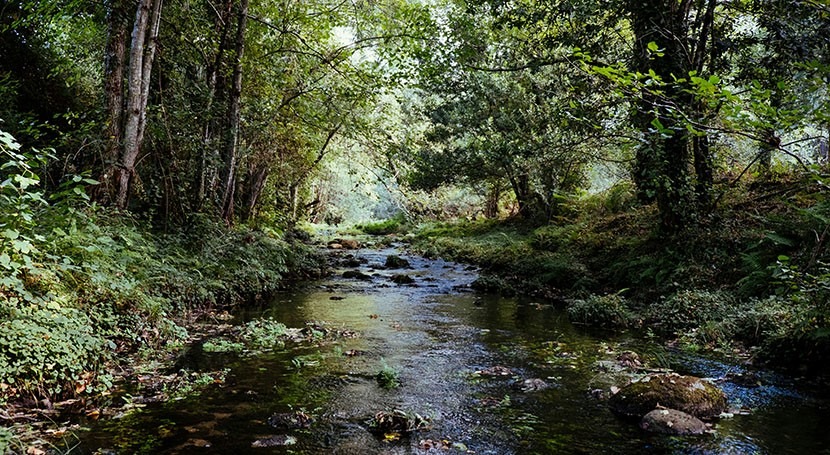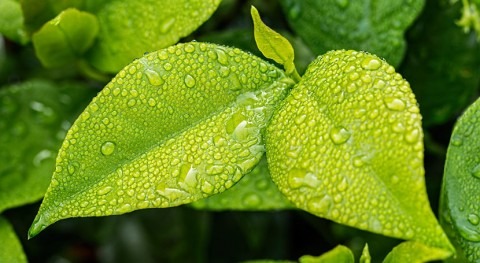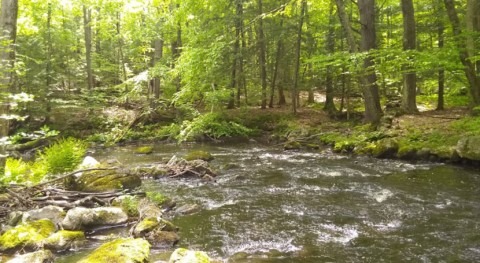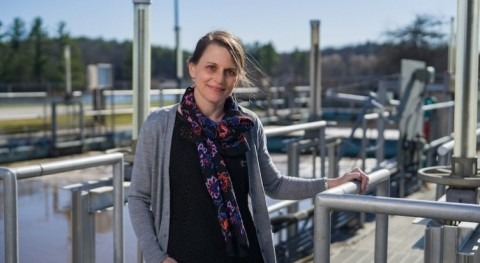Carbon dioxide (CO2) emissions are not typically associated with water ways, like streams and rivers, but emerging research shows that water bodies play an important role in storing and releasing carbon dioxide. As many states look for cost-effective ways to mitigate climate change, scientists at the New Hampshire Agricultural Experiment Station at the University of New Hampshire looked at a way to optimize CO2 sensors to better measure carbon dioxide emissions in lotic, or moving, bodies of water offering a new tool that can help provide valuable information for everything from land use to climate action plans.
“These sensors, adapted for highly dynamic flow like floods, allow us to see if a disproportionate amount of CO2 is transferred from land during short periods of time, and whether this can contribute significant emissions to the atmosphere,” said Wilfred Wollheim, associate professor of natural resources and environment.
The study published in Limnology and Oceanography: Methods outlines how the researchers modified an existing sensor—originally developed to measure dissolved carbon dioxide in oceans—by adding a protective housing that accounted for changing water levels and unidirectional flow of running water. The researchers also chose materials known to limit damage to the sensor by microorganisms. The team plans to make these sensor modifications publicly available, allowing other scientists to use the design.
“After making these adaptations, we found the sensors to be quite reliable in measuring carbon dioxide in streams,” said graduate student Drew Robison ’21 and lead author. “We were able to differentiate between streams that were bigger sources of CO2 and start to examine when and why moments of high CO2 emissions occurred.”
The researchers say this information could be particularly important in determining how land use choices may alter the CO2 regimes of streams and rivers
In addition to being able to accurately measure CO2 levels in streams and rivers, the researchers wanted to significantly increase the frequency at which emissions could be captured, helping to better understand the impacts of extreme precipitation events and other periods when there could be disruptions to normal observed water flow rates.
The researchers say this information could be particularly important in determining how land use choices may alter the CO2 regimes of streams and rivers. For example, if a forest is developed into a farm, or a suburban neighborhood, the sensors could help understand the mechanism of any change, such as altering stream metabolism or the runoff dynamics.
Wollheim has begun related sensor modification projects to measure carbon and nitrogen in other environments, including forests and agricultural lands. These sensors will focus on soil characteristics, potentially providing farmers and other land managers with almost real-time information for optimizing soil nutrients to support their farming operations and minimizing excess fertilizer applications that could lead to runoff and surplus nutrients in nearby lakes, ponds and other bodies of water.
This work was supported by the N.H. Agricultural Experiment Station through joint funding provided by the National Institute of Food and Agriculture and the state of New Hampshire, as well as funding from the National Science Foundation’s Long Term Ecological Research program.
The University of New Hampshire inspires innovation and transforms lives in our state, nation and world. More than 16,000 students from 49 states and 82 countries engage with an award-winning faculty in top-ranked programs in business, engineering, law, health and human services, liberal arts and the sciences across more than 200 programs of study. A Carnegie Classification R1 institution, UNH partners with NASA, NOAA, NSF, and NIH, and received over $210 million in competitive external funding in FY23 to further explore and define the frontiers of land, sea and space.






